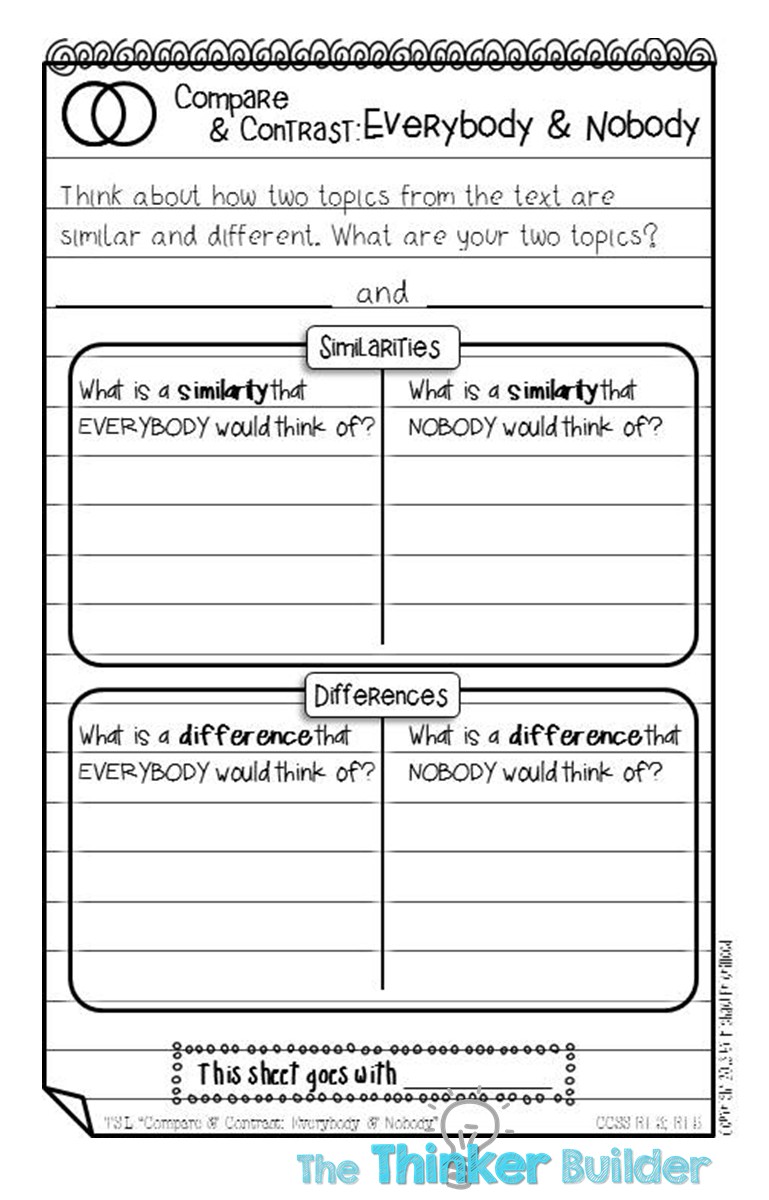When asked to compare and contrast, the immediate image that often pops into our heads is the Venn diagram. Those overlapping circles, while a universally recognized symbol for comparison, can sometimes feel limiting. While Venn diagrams can be a starting point, there are alternative strategies that can lead to deeper and more organized thinking. This article explores several effective methods for comparing and contrasting, moving beyond the traditional Venn diagram approach.
Alternative Strategies for Comparing and Contrasting
While the Venn diagram serves as a visual representation of similarities and differences, it often falls short in facilitating a thorough analysis. The limited space within the overlapping section can hinder detailed note-taking, and the outer circles can become disorganized. Here are some alternative strategies to consider:
1. The “Everybody and Nobody” Approach
This strategy encourages students to think critically about obvious and less obvious similarities and differences. By asking students to identify a similarity and difference that everybody would recognize and then a similarity and difference that nobody would think of, this method fosters differentiated learning. Students of all levels can participate, with struggling learners focusing on the “everybody” aspects and advanced learners challenged by the “nobody” aspects. This method naturally encourages deeper analysis.
2. The Versatile T-Chart
The T-chart offers a flexible and adaptable format for comparing and contrasting. A simple three-column T-chart can be highly effective. The left and right columns list the characteristics of the two topics being compared, while the center column identifies the specific feature being examined in each row. This method works well for comparing various elements, from informational topics and entire stories to specific details like characters or settings.
3. Thinking Outside the Box with Analogies
Analogies encourage higher-level thinking by comparing and contrasting a text element with a seemingly unrelated concept. This strategy pushes students to identify similarities and differences in non-literal ways, fostering deeper understanding and creative thinking. While challenging, analogies can lead to unique insights and a richer appreciation of the text.
4. Exploring “The Differences Within” Similarities
This strategy acknowledges that similarities can exist on a broader level, while differences reside within those similarities. By first identifying a shared characteristic and then delving into the specific ways those characteristics differ, students develop a more nuanced understanding of the relationship between the topics.
5. Organizing Information with a Matrix Chart
When comparing and contrasting multiple items across several criteria, a matrix chart provides a clear and organized framework. This spreadsheet-like structure allows for systematic analysis, enabling students to identify patterns and draw conclusions more effectively.
Conclusion: Choosing the Right Strategy
While the Venn diagram remains a familiar tool, these alternative strategies provide valuable options for comparing and contrasting. By understanding the strengths of each method, educators and students can choose the most effective approach for a given task, ultimately leading to a more comprehensive and insightful analysis. The key is to move beyond relying solely on the Venn diagram and embrace the diverse range of tools available for fostering critical thinking and deeper understanding.
